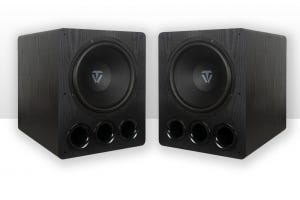
While we all love our furry friends, we know that they can be troublemakers. You're probably all too familiar with the dreaded feeling of finding out that the cat chewed through a TV cable, or the dog got hold of your new headphones. This is no infrequent incident -- pets cause an estimated $3 billion in damage to electronic devices each year! This, of course, is not just damaging to your electronics, but puts your pets in danger, especially when it comes to cables running electricity or swallowing batteries.
The last thing you want to do, beyond replacing your cables and devices, is take your pet to the vet and potentially have to pay for x-rays and ultrasounds. In a time when the number of electronics in the household only continues to grow, it's important to take safety precautions when it comes to animals. Here are some important steps you can take to protect your pets from cables and electronics:
Organise Cables
To stop pets from chewing on cables, make the cables hard to find. When you have an entire entertainment system hooked up, it's easy to end up with a jungle of wires. Organising your cables is a great way to keep them out of sight and inaccessible to pets. While there are a plethora of cable management tips out there, the most important for pet safety is to bundle cables together using wraps that cover the wires completely. This will protect the bundles even if your pets do find them. Additionally, hide wire bundles in raceways along the walls and baseboards. There are many styles of adhesive cable clips and wraps so you can easily attach wires to nearby surfaces, such as underneath shelving or the TV stand. You can also get a cable cover specifically designed for protecting pets, such as CritterCord. These can be placed on bundles of wires or larger cables like power cords, and are infused with scents and bitter flavors to discourage animals from chewing.
Train Your Pet
If you have a dog, investing some time into training can significantly reduce unwanted behaviors. The most important part of training is being consistent, so this method works best if you can be around to discourage unwanted chewing and encourage positive chewing with toys and treats. If you have a cat, training may not be as straightforward. However, using a spray bottle is a great way to discourage bad behaviors, just be careful using a spray bottle around electronics! Additionally, chewing on wires can be a sign of boredom, so make sure your cat has new toys every so often and is getting enough exercise and playtime. Try to avoid getting toys that resemble cables, like long strings or yarn.
Use a pet deterrent spray like Grannick's Bitter Apple on wiring and electronics (carefully). Typically, any citrus spray will be enough to keep them away. This will deter pets from chewing without harming them.
Store Electronics
When it comes to electronics, the best thing you can do is to put them away and keep them inaccessible to pets. Rather than leaving out smaller devices like tablets and computers, put them in designated drawers. A common issue with sound systems is cats clawing at the soft and porous cover on loudspeakers. To avoid this, put your speakers on stands so that they are away from the ground and other shelving.
If possible, switch to wireless devices or opt for wireless electronics when you make new purchases to reduce the cabling in your house. Particularly, opt for devices that use apps instead of physical remotes for wireless control.





